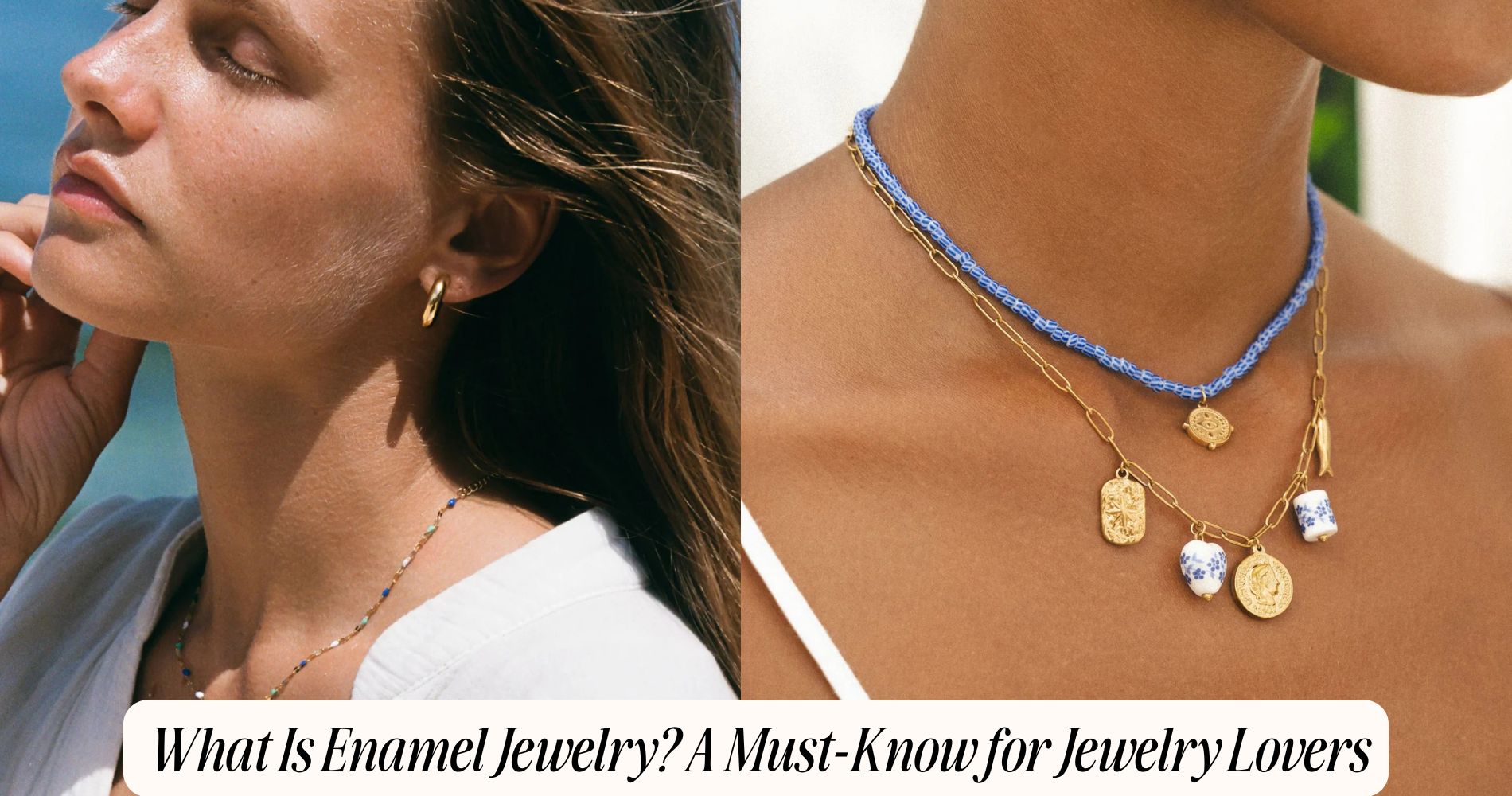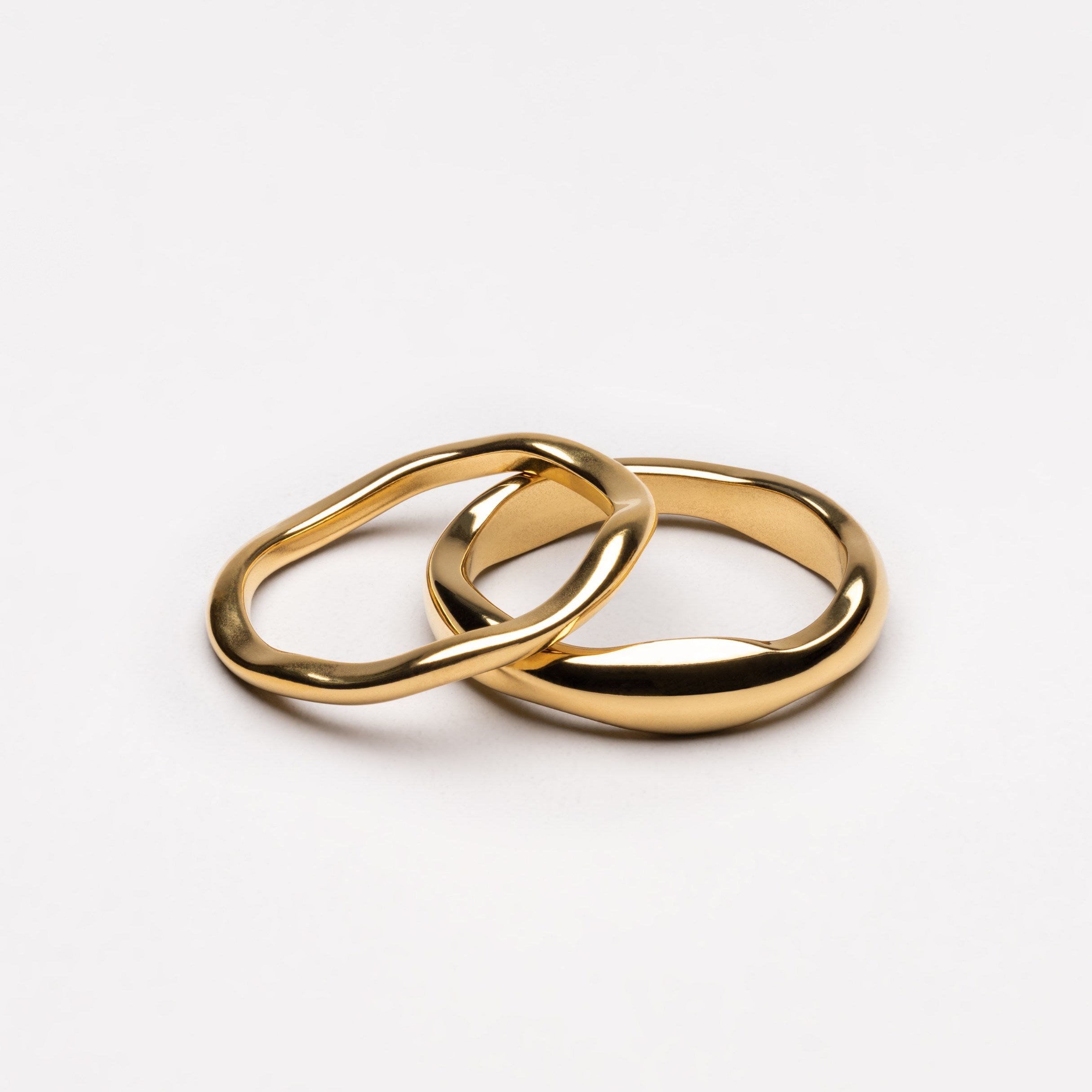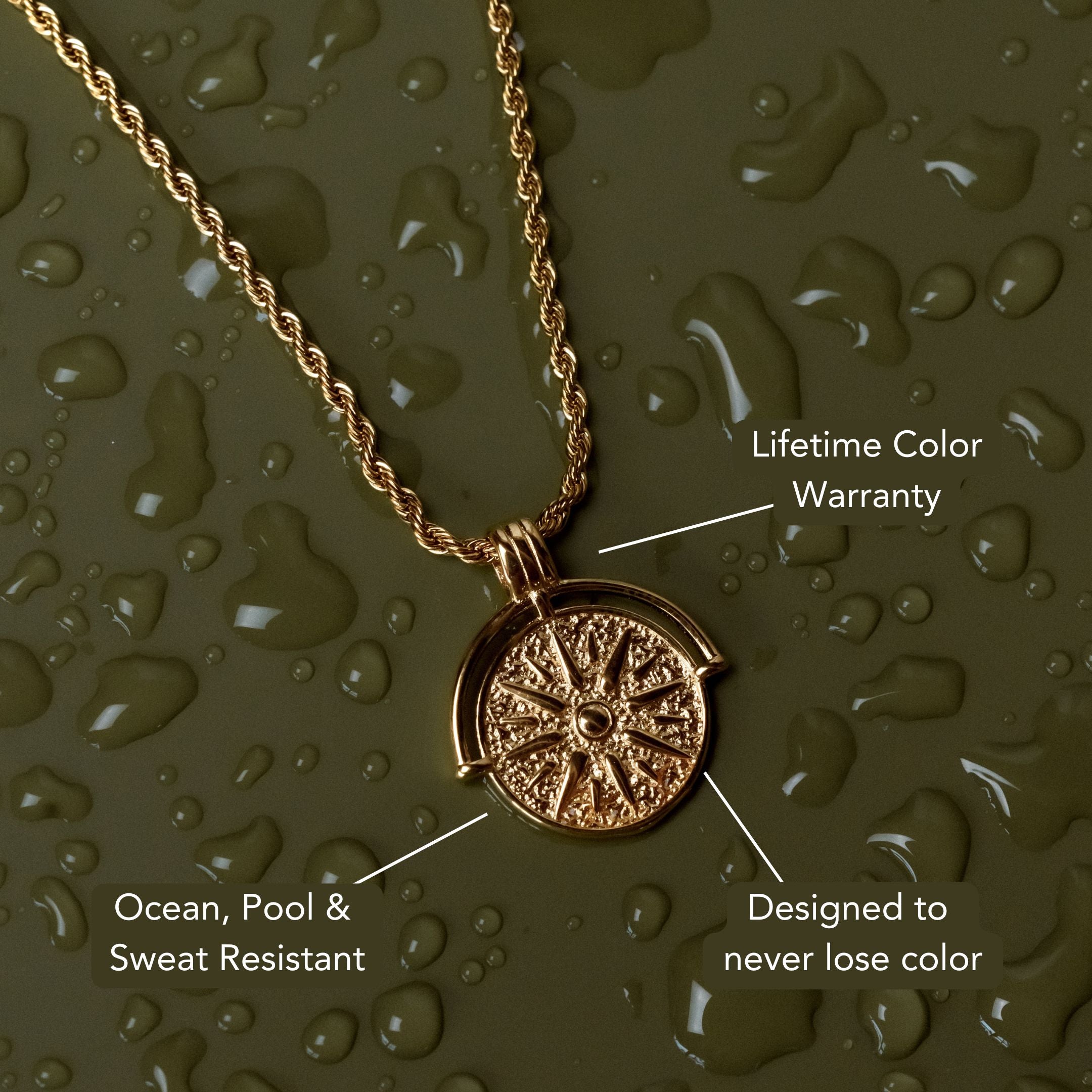
What Is Enamel Jewelry? A Must-Know for Jewelry Lovers
What is enamel jewelry? It’s a stunning art form created by fusing powdered glass and metal oxides onto metal, resulting in vibrant, glossy surfaces that catch the light with a beautiful translucent glow. Iconic techniques like cloisonné—where thin wires outline each color segment—and champlevé—where enamel is filled into carved recesses—have been used for centuries, from ancient Egyptian artifacts to modern statement pieces. If you’re intrigued by its craftsmanship and timeless charm, you’ll love exploring collections like Atolea’s waterproof jewelry, where enduring style meets everyday durability.
The Art and Science Behind Enamel Jewelry
Although enamel jewelry dazzles with vibrant color and intricate designs, its allure lies equally in the meticulous marriage of artistic vision and scientific mastery. When you explore this craft, you’ll notice how enamel artists carefully select enamel color palettes—each pigment derived from ground glass mixed with metal oxides.
Precision matters: the artist must consider how these colors transform under high kiln temperatures. You’ll see techniques like cloisonné, where thin metal wires shape compartments for different hues, or champlevé, involving carved recesses in metal.
These enamel artist techniques demand an exacting hand and deep chemical understanding to prevent cracking and guarantee color brilliance. Every piece you encounter is a witness to the synergy of creative expression and material science, not just surface beauty.
Exploring the Rich History of Enameling
When you trace the origins of enameling, you'll find a technique that spans continents and millennia, evolving alongside the rise and fall of great civilizations. The historical origins of enameling date back to ancient Egypt, where artisans fused powdered glass to metal to create vivid amulets and decorative objects.
As you examine Greek, Roman, and Byzantine artifacts, you'll notice how enameling adapted to different artistic styles, reflecting each culture’s aesthetics and values. In medieval Europe, cloisonné and champlevé enameling adorned religious relics, underlining the profound cultural significance bestowed on these pieces.
Across Asia, particularly in China and India, you see how enamel became integral in courtly jewelry, symbolizing status and spirituality. This rich legacy highlights enameling’s enduring appeal and transcultural resonance.
Types of Enamel Techniques Used in Jewelry
Building on this global and historical foundation, you'll encounter a remarkable spectrum of techniques that define enamel jewelry’s artistry. Cloisonné is perhaps the most recognized, where fine metal wires create compartments filled with enamel, allowing for striking color blending and intricate detail.
Champlevé involves carving recesses directly into the metal surface, then filling them with enamel, emphasizing enamel purity and depth.
Plique-à-jour offers a stained-glass effect by suspending enamel within a metal framework, requiring exceptional skill for even color blending and translucency.
Basse-taille uses engraved patterns beneath translucent enamel, enhancing visual texture.
Each method manipulates enamel purity and the interplay of light and color.
As you explore different pieces, you’ll notice how these techniques contribute to enamel jewelry’s enduring visual allure and technical sophistication.
Why Enamel Jewelry Stands Out in Modern Fashion
While trends in contemporary jewelry frequently shift toward minimalism or mass-produced aesthetics, enamel jewelry consistently captures attention due to its unmistakable vibrancy and artisanal quality.
When you choose enamel pieces, you’re selecting accessories that fuse bold color with intricate craftsmanship—qualities that set them apart from generic costume accessories. Enamel’s luminous finish and layered translucency allow designers to experiment with hues and patterns not achievable in metals or gemstones alone.
This technique evokes a vintage appeal, recalling Art Nouveau and mid-century styles, while seamlessly integrating with modern fashion sensibilities. Whether you pair enamel bangles with sleek attire or use a statement brooch to punctuate your look, you’ll find enamel jewelry’s distinctiveness adds depth and personality, making it a perennial favorite among style-conscious individuals.
Caring for and Preserving Your Enamel Pieces
Although enamel jewelry boasts remarkable durability, its glass-like surface demands thoughtful care to preserve its radiant luster and intricate detail.
To maintain your pieces, always use gentle cleaning tips: wipe enamel surfaces with a soft, damp cloth and avoid abrasive cleaners or harsh chemicals that can scratch or dull the finish. If necessary, use mild soap diluted in water, but never submerge your jewelry, as prolonged exposure can weaken the enamel’s bond to metal.
For storage solutions, keep your enamel jewelry separate from other items to prevent chips or scratches—individual pouches or lined compartments work best. Avoid high humidity and extreme temperatures, as these conditions can compromise both the metal and enamel.
With mindful handling, your enamel treasures will retain their mesmerizing allure for years.
How to Style and Choose Enamel Jewelry
Curious how to make enamel jewelry a signature part of your personal style? Start by considering color theory—enamel’s vibrant hues let you create striking contrasts or harmonious blends with your wardrobe.
For pairing for occasions, choose bold, statement enamel pieces for festive events, while subtle, pastel-toned enamel accents suit professional or casual settings.
Evaluate the metal base—gold, silver, or rose gold—to ensure cohesion with your existing collection.
When mixing with other jewelry, balance is key: combine enamel rings or bangles with minimalist metal pieces to avoid visual clutter.
Layering enamel pendants with delicate chains adds dimension without overwhelming your look.
Always match the enamel’s finish—glossy, matte, or textured—to the overall mood you want to achieve, ensuring a cohesive, intentional ensemble.
Frequently Asked Questions
Is Enamel Jewelry Hypoallergenic for Sensitive Skin?
You should know enamel itself has hypoallergenic properties, but skin sensitivity often depends on the metal base underneath. If you’re prone to allergies, select pieces with surgical-grade stainless steel or high-quality gold for ideal protection.
Can Enamel Jewelry Be Resized or Repaired if Damaged?
You can't usually resize enamel jewelry due to its fragile surface, but skilled jewelers use precise repair options like cold enameling or touch-up techniques. Resizing techniques risk damaging the enamel, so focus on specialized repair options instead.
Are There Any Ethical Concerns With Enamel Production?
You should consider ethical concerns with enamel production, especially regarding sustainable sourcing of minerals and pigments. Manufacturing processes can impact the environment through energy use and waste. Look for artisans prioritizing eco-friendly practices and transparent material sourcing.
How Can I Distinguish Real Enamel From Imitation?
To distinguish real enamel, examine its smooth, glassy surface from kiln-firing enamel techniques versus imitation’s plastic-like finish. Use magnification for an imitation comparison—true enamel resists scratching, displays vibrant colors, and doesn't show bubbling or peeling.
Does Enamel Jewelry Have Significant Resale Value?
When you consider the resale market, enamel jewelry's investment potential depends on craftsmanship, rarity, and designer reputation. High-quality, vintage, or signed pieces often retain or increase value, while mass-produced items typically don't command significant resale premiums.
Conclusion
As you explore enamel jewelry, you’re engaging with a centuries-old art form that fuses vibrant glass powder with precious metals through precise kiln-firing or torching techniques like cloisonné and champlevé. Its resilience, chromatic brilliance, and versatility let you express individuality in modern fashion. By understanding proper care—protecting from abrasives and extreme temperatures—you’ll preserve both beauty and craftsmanship. So, when you choose enamel pieces, you’re not just accessorizing; you’re celebrating tradition, innovation, and meticulous artistry.
























Leave a comment
This site is protected by hCaptcha and the hCaptcha Privacy Policy and Terms of Service apply.